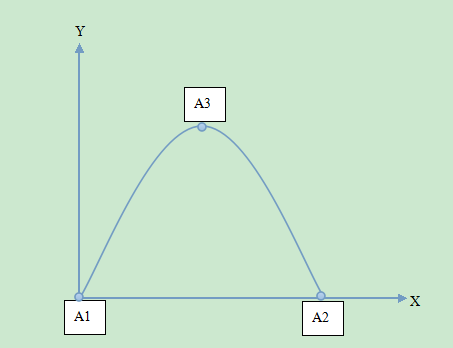
- Android Handler的详细介绍
- Android TextView显示html样式的文字
- Android特效之水波纹的实现
- Android编程之Activity中onDestroy()调用分析
- 详解Android中的Menu菜单键
- android Imageview 图片覆盖具体实现
- Android常用布局(FrameLayout、LinearLayout、RelativeLayout)详解
- 实现activity管理器一次退出所有activity
- 解析Android开发优化之:软引用与弱引用的应用
- Android 关机弹出选择菜单的深入解析
- Android中实现下载URL地址的网络资源的实例分享
- Android中判断是否有前置摄像头、后置摄像头的方法
- Android ProgressDialog使用总结
- android控件封装 自己封装的dialog控件
- Android中自定义标题栏样式的两种方法
- Android编程实现图标拖动效果的方法
- [Android开发视频教程]02_10_Animations的使用(三)
- 一些比较实用的 Android adb 命令分享
- Android仿百度外卖自定义下拉刷新效果
- Android实现给TableLayou绘制边框的方法
- Android应用读取Excel文件的方法
- 第1个Android应用程序 Android制作简单单页导航
- Android程序开发之UIScrollerView里有两个tableView
- FrameLayout和Fragment处理Android应用UI布局实例
- Android图片上传实现预览效果
- [Android开发视频教程]02_12_JSON数据解析
- android 开发 文件读写应用案例分析
- Android编程基于Contacts读取联系人的方法(附demo源码)
- Android实现ListView异步加载图片的方法
- Android仿XListView支持下拉刷新和上划加载更多的自定义RecyclerView
Android编程实现ImageView图片抛物线动画效果的方法
作者:佚名 Android开发编辑:admin 更新时间:2022-07-23
本文实例讲述了Android编程实现ImageView图片抛物线动画效果的方法。分享给大家供大家参考,具体如下:
想实现抛物线动画,必须知道抛物线的方程,这时候数学其作用了,假如有如图的抛物线:

按照抛物线的方程特别,知道任何的三点可以确定一条抛物线,由已知抛物线的标注
方程为 y = ax² + bx + c;假设A1坐标为(0,0),A2坐标为(300,0),A3坐标为(150,300);联合解方程得知该抛物线的方程为 y = -1/75 x² + 4x;由此方程,我们可以确定抛物线x和y的关系了,下面的事情就简单了。
在新的API中,有ObjectAnimator动画,在这个动画里面,我们可以做一些我们想要的东西了。关于ObjectAnimator的用法,大家自己找资料去看吧:下面直接给出源码:
//分300步进行移动动画
final int count = 300;
/**
* 要start 动画的那张图片的ImageView
* @param imageView
*/
private void startAnimation(final ImageView imageView) {
Keyframe[] keyframes = new Keyframe[count];
final float keyStep = 1f / (float) count;
float key = keyStep;
for (int i = 0; i < count; ++i) {
keyframes[i] = Keyframe.ofFloat(key, i + 1);
key += keyStep;
}
PropertyValuesHolder pvhX = PropertyValuesHolder.ofKeyframe("translationX", keyframes);
key = keyStep;
for (int i = 0; i < count; ++i) {
keyframes[i] = Keyframe.ofFloat(key, -getY(i + 1));
key += keyStep;
}
PropertyValuesHolder pvhY = PropertyValuesHolder.ofKeyframe("translationY", keyframes);
ObjectAnimator yxBouncer = ObjectAnimator.ofPropertyValuesHolder(imageView, pvhY, pvhX).setDuration(1500);
yxBouncer.setInterpolator(new BounceInterpolator());
yxBouncer.start();
}
final float a = -1f / 75f;
/**
* 这里是根据三个坐标点{(0,0),(300,0),(150,300)}计算出来的抛物线方程
*
* @param x
* @return
*/
private float getY(float x) {
return a * x * x + 4 * x;
}
调用的时候很简单:startAnimation(imageView) 即可,PropertyValuesHolder,等等自己查资料吧。
附上已知抛物线三点求抛物线方程的算法:
package com.freesonfish;
public class ParabolaAlgorithm {
public static void main(String[] args) {
final float[][] points = { { 6, 15 }, { 15, 70 }, { 40, 60 } };
calculate(points);
}
/**
* a = (y1 * (x2 - x3) + y2 * (x3 - x1) + y3 * (x1 - x2)) / (x1 * x1 * (x2 -
* x3) + x2 * x2 * (x3 - x1) + x3 * x3 * (x1 - x2))
* b = (y1 - y2) / (x1 - x2) - a * (x1 + x2);
* c = y1 - (x1 * x1) * a - x1 * b;
*/
private static void calculate(float[][] points) {
float x1 = points[0][0];
float y1 = points[0][1];
float x2 = points[1][0];
float y2 = points[1][1];
float x3 = points[2][0];
float y3 = points[2][1];
final float a = (y1 * (x2 - x3) + y2 * (x3 - x1) + y3 * (x1 - x2))
/ (x1 * x1 * (x2 - x3) + x2 * x2 * (x3 - x1) + x3 * x3 * (x1 - x2));
final float b = (y1 - y2) / (x1 - x2) - a * (x1 + x2);
final float c = y1 - (x1 * x1) * a - x1 * b;
System.out.println("-a->" + a + " b->" +b + " c->" +c);
}
}
希望本文所述对大家Android程序设计有所帮助。
- 上一篇文章: Android启动相机拍照并返回图片
- 下一篇文章: Android编程实现小说阅读器滑动效果的方法
- ANDROID 完美退出APP的实例代码
- android开发教程之startActivityForResult使
- Android优化应用启动速度
- android Watchdog 实现剖析
- Android编程开发之NotiFication用法详解
- android通用xml解析方法
- 基于Android中Webview使用自定义的javascri